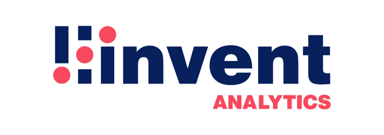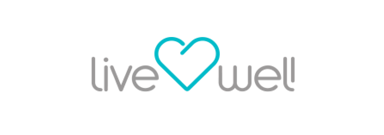
Campus Recruitment Strategies: Essential Steps for Hiring Top Talent
Graduate recruitment has become a vital business priority, with companies planning to hire 14.7% more new college graduates from the Class of 2023 than last year. The job market for recent graduates has reached its peak in over three years. Each year, about two million students earn their bachelor's degrees.
Generation Z candidates have different priorities, making traditional recruiting methods less effective. Our complete campus recruiting strategy will help you direct these changes with confidence. You'll learn the best ways to attract and select top graduate talent.
This piece shows you how to create and run a graduate recruitment process that resonates with today's graduates. This practical approach will benefit your organization's hiring goals.

Planning Your Campus Recruitment Strategy
Successful campus recruitment begins with careful planning months before visiting any university. A well-defined strategy will ensure a smooth recruitment process that aligns with your organization's talent needs and maximizes investment returns.
Setting clear recruitment goals
Your campus recruitment program needs specific objectives that support your company's talent strategy. You should work closely with hiring managers to determine headcount requirements, identify critical roles, and understand which departments need new graduates.
You must decide if you're looking for interns, entry-level hires, or contract workers to build an effective talent pipeline.
Identifying target universities
The right universities can be selected through analytical insights. Start by looking at your successful hires and emerging talent trends. These key factors matter when you evaluate potential target schools:
- Curriculum relevance and accreditation
- Geographic location and potential relocation challenges
- Student demographics and diversity metrics
- Career services support and faculty accessibility
Assessing the competitive landscape at each campus is essential to keeping your offerings attractive to potential candidates. University recruitment budgets can amount to half a million dollars annually, so picking the right schools is crucial for optimal ROI.
Creating a recruitment timeline
The planning for campus recruitment usually starts six months before the fiscal year budgets are finalized. A typical recruitment cycle includes:
- Early Summer: Strategy development and school selection
- August-October: Career fairs and information sessions
- October-December: Original candidate screenings
- February-April: Final interviews and offer extensions
Allocating budget and resources
Your recruitment budget must cover more than travel and career fair costs. Resources should be allocated for:
- Virtual recruitment platforms and technology
- Branded materials and candidate engagement tools
- Assessment tools and interview processes
- University partnerships and sponsorships
A digital campus recruitment strategy can optimize spending. This approach reduces travel expenses while maintaining control over candidate engagement. Strategic collaborations with career centers are an excellent way to access resources and understand student priorities and expectations.
It is vital to systematically track expenses using a detailed spreadsheet that includes both budgeted amounts and actual spending for each category. This information assists in analyzing ROI and making informed decisions about future recruitment investments.

Building Strong University Partnerships
Strong university partnerships are the lifeblood of successful campus recruitment. These collaborations build lasting connections that drive retention and brand loyalty in your talent pipeline.
Connecting with career centers
Career centers are essential gateways to emerging talent, offering comprehensive services beyond traditional job listings. Through these partnerships, organizations gain access to valuable resources:
- Mock interview programs and resume reviews
- Networking events and career fairs
- Professional development workshops
- Student mentoring opportunities
Career centers connect with employers to understand current skill requirements and workforce trends. They help align student competencies with industry needs so graduates are well-prepared for their professional trips.
Developing faculty relationships
Faculty members are vital in identifying and influencing top talent because they interact with students daily and understand their capabilities better than anyone else. Strong faculty connections offer several strategic advantages:
Professors can give an explanation about promising students' skills and potential, especially for sophomores and juniors who might be excellent internship candidates. They often serve as trusted advisors who guide students' career choices and priorities.
Once they grasp your organization's mission and values, faculty members can become strong ambassadors who effectively communicate the student-faculty experience. When faculty members include company examples in their lectures, your employer's branding efforts will gain a significant advantage.
These practical strategies cultivate meaningful relationships among faculty:
- Invite professors to contribute their expertise through guest lectures or adjunct positions
- Sponsor faculty research projects relevant to your industry
- Aid professional development opportunities through site visits and training programs
To achieve optimal results, advisory board meetings should occur at least once each semester. These interactions ensure that the curriculum aligns with industry needs and creates collaborative research opportunities that benefit both parties.
Building faculty relationships requires time and careful planning due to the differences between university culture and corporate environments. Nevertheless, investing in these partnerships yields benefits such as enhanced access to top talent and better integration within the academic ecosystem.

Creating an Effective Selection Process
A dependable selection process is the cornerstone of effective campus recruitment. Recent data indicates that over 55% of employers utilize pre-employment assessments to evaluate candidate knowledge and skills.
Designing skill assessments
Pre-employment testing provides an objective method to evaluate candidates regardless of their backgrounds or opportunities. Modern skill assessments include:
- Cognitive aptitude tests that measure problem-solving and critical thinking
- Emotional intelligence evaluations that show teamwork and motivation
- Workplace assessments that show organizational fit
- Personality assessments that reveal core traits like work ethic and integrity
Companies that use skill-based assessments see a 24% improvement in their hiring competency.
Structuring interviews
Well-structured interviews enhance reliability by applying consistent rules for evaluating responses. Standardized questions ensure fair comparisons among candidates, making the interview process the most effective.
Ask behavioral and situational questions to understand past actions and hypothetical situations. Train your interviewers in practical methods and help them recognize unconscious biases.
Setting evaluation criteria
Clear evaluation criteria facilitate unbiased and objective assessments of candidates. The best results arise from:
- Specific competencies based on job requirements
- Detailed scoring rubrics for each interview question
- Systematic documentation of candidate responses
- Consistent rating standards that evaluators must follow
Evaluators should discuss and agree on expectations before starting assessments. They should also complete their ratings during interviews instead of afterward to ensure accuracy.
Your assessment process must be mobile-friendly and engaging, as today's graduates expect a modern, streamlined experience. A well-designed assessment format leaves positive impressions on 91% of candidates.
Organizations using objective data points in their hiring criteria make quicker, more informed decisions with less unintended bias. This structured approach helps identify candidates whose workplace needs align with organizational values, leading to improved retention and productivity.

Measuring Recruitment Success
Analytics-driven decision-making fuels effective campus recruitment today. Research indicates that only 30% of companies assess their recruiting efforts. This disparity offers a significant opportunity to enhance this crucial area.
Key performance metrics
Companies that track recruitment metrics experience a threefold increase in retention. They also double their employee engagement and productivity. These metrics assist in assessing the success of campus recruitment:
- Offer Acceptance Rate: This number shows how many candidates accept job offers. It reflects the appeal and strength of your compensation packages and employer brand.
- Quality of Hire: Performance ratings and first-year achievements help measure how well your selection process works.
- Time-to-fill: Recruiters track the time between job posting approval and position closure. This helps them better plan resources and speed up hiring.
- Source of Hire: Future recruitment plans are shaped by finding which channels bring the best candidates. Technology helps 80% of companies learn about their campus recruiting talent.
Data analysis methods
Recruitment analytics works on three levels:
Basic reporting monitors essential metrics such as cost per hire and selection ratios. Advanced reporting aggregates various data sources, providing in-depth insights into candidate experience and the performance of the recruitment funnel.
Predictive analytics enhances planning and forecasting. Companies with advanced recruitment analytics double their recruiting success. Here's how to maximize recruitment data:
- Create transparent measurement processes that match business goals
- Monitor progress throughout the year
- Let automation handle administrative work
- Use tech solutions to capture and analyze data
Campus recruiting technology is the top source for entry-level hiring in 50% of companies. Regular data collection and analysis enable companies to identify problems, enhance processes, and make informed investments in future recruitment.

Conclusion
Campus recruitment is an essential component of contemporary talent acquisition strategies. Organizations can develop effective graduate recruitment programs with measurable outcomes through careful planning, strategic partnerships with universities, well-defined selection processes, and informed measurement.
Building an effective campus recruitment program takes time and commitment. Implementing these proven strategies, carefully monitoring your results, and refining your approach based on performance data will strengthen your organization's talent pipeline.
The investments you make in campus recruitment today will shape your organization's future talent.
Contents
Get a demo
- Quickly find top candidates with smart application management
- Improve team collaboration using built-in communication and workflows
- Offer a smooth candidate experience to strengthen your employer brand
- Count on 24/7 support for a hassle-free hiring process
- Quickly find top candidates with smart application management
- Improve team collaboration using built-in communication and workflows
- Offer a smooth candidate experience to strengthen your employer brand
- Count on 24/7 support for a hassle-free hiring process
"We truly felt the speed difference. Everything was smoother, and candidate feedback was much more positive. It made our jobs easier."

Trusted by 100+ teams
Suggested Blog Posts

20+ Performance Management Statistics

8 Examples of Performance Goals at Work
















